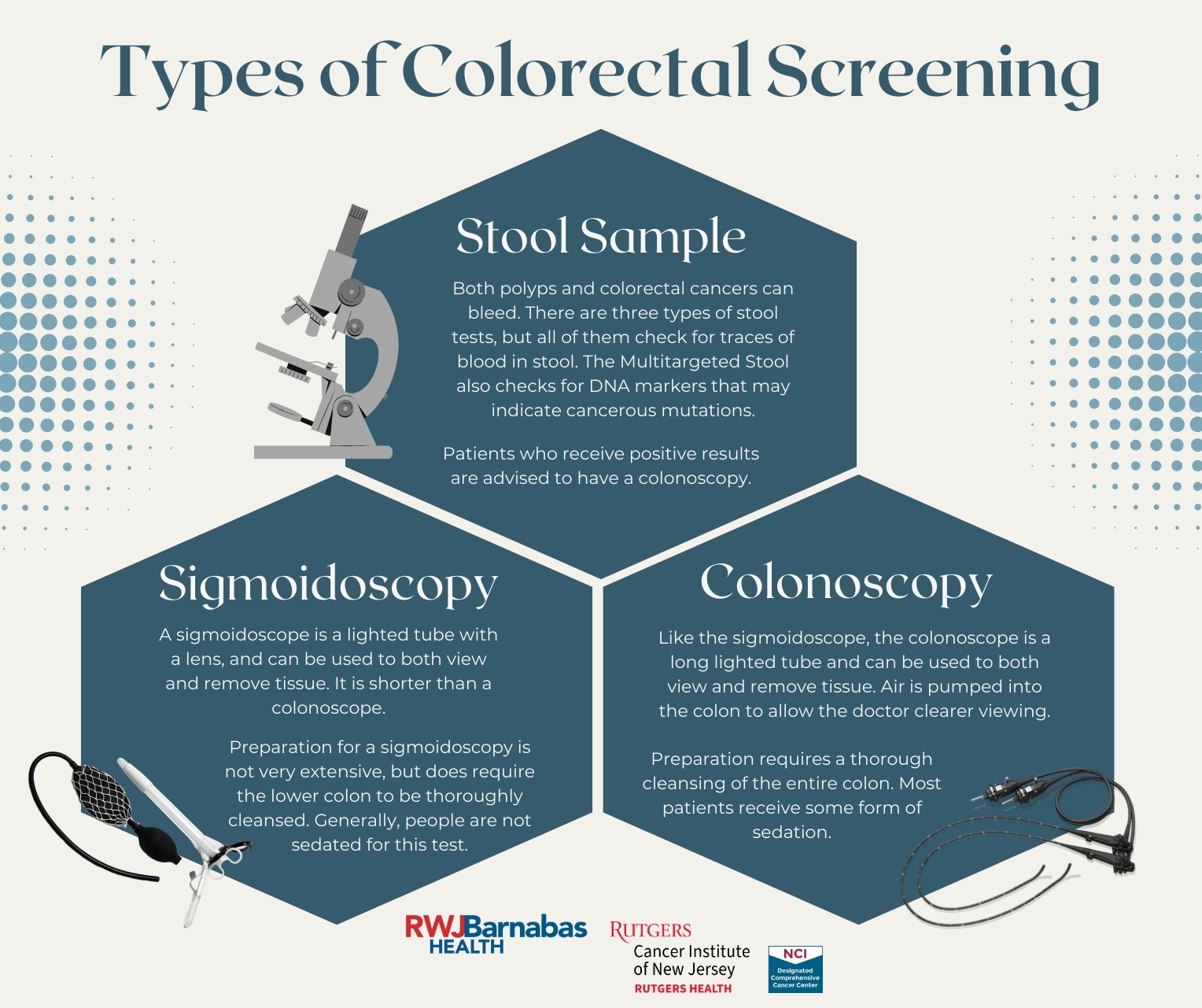According to the American Cancer Society, colorectal cancer is the third most common type of cancer in both men and women in the United States. Many colorectal cancers can be prevented through regular screening. Screening can find precancerous polyps—abnormal growths in the colon or rectum—so that they can be removed before they turn into cancer.
It is typically recommended by the American Cancer Society that colorectal cancer screening for men and women should begin at age 45. Those with a family history and other underlying conditions should speak with their health care provider to determine what screening regimen is appropriate for them. The following types of tests are used to screen for colorectal cancer: stool test, sigmoidoscopy, colonoscopy and virtual colonoscopy.
What to Know About Colorectal Cancer with Dr. Pat Gulhati
Dr. Prateek Gulhati, expert at Rutgers Cancer Institute, shares the basics about colorectal cancer.
Types of Colorectal Cancer Screenings

Routine colorectal cancer screenings make a significant difference in early detection to improve cancer outcomes. Types of colorectal cancer screenings include:
Stool Tests: Both polyps and colorectal cancers can bleed, and stool tests check for tiny amounts of blood in feces (stool) that cannot be seen visually. With these tests, stool samples are collected by the patient using a kit, and the samples are returned to the doctor. People who have a positive finding with these tests are advised to have a colonoscopy.
Sigmoidoscopy: In this test, the rectum and sigmoid colon are examined using a sigmoidoscope, a flexible lighted tube with a lens for viewing and a tool for removing tissue. This instrument is inserted through the anus into the rectum and sigmoid colon as air is pumped into the colon to expand it so the doctor can see the colon lining more clearly. During sigmoidoscopy, abnormal growths in the rectum and sigmoid colon can be removed for analysis (biopsied).
Colonoscopy: During a colonoscopy, the rectum and entire colon are examined using a colonoscope, a flexible lighted tube with a lens for viewing and a tool for removing tissue. Like the shorter sigmoidoscope, the colonoscope is inserted through the anus into the rectum and the colon as air is pumped into the colon to expand it so the doctor can see the colon lining more clearly. During colonoscopy, any abnormal growths in the entire colon and the rectum can be removed.
Virtual Colonoscopy: also called computed tomographic (CT) colonography, is a screening method that uses special x-ray equipment (a CT scanner) to produce a series of pictures of the colon and the rectum from outside the body. A computer then assembles these pictures into detailed images that can show polyps and other abnormalities. If polyps or other abnormal growths are found during a virtual colonoscopy, a standard colonoscopy must usually be performed to remove them.
Information about types of Colorectal cancer screening originally published by the National Cancer Institute.
Related Articles and Press

Exploring Disparities in Colorectal Cancer
Despite health systems placing stronger emphasis on making preventive care accessible and equitable, significant disparities persist among some racial and ethnic groups.

Insights into the Growing Incidence of Colorectal Cancer in Young Adults
Incidences of colorectal cancer in young people (those between their mid-20s and late 50s) has more than doubled since the 1990s.

